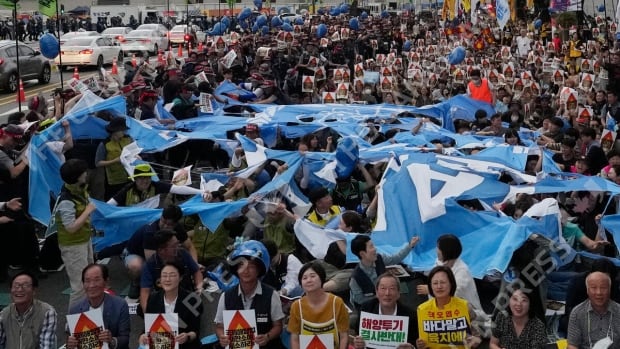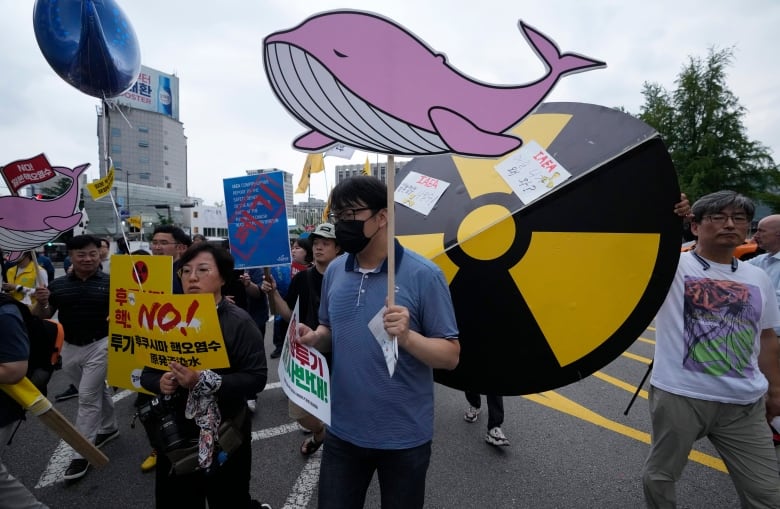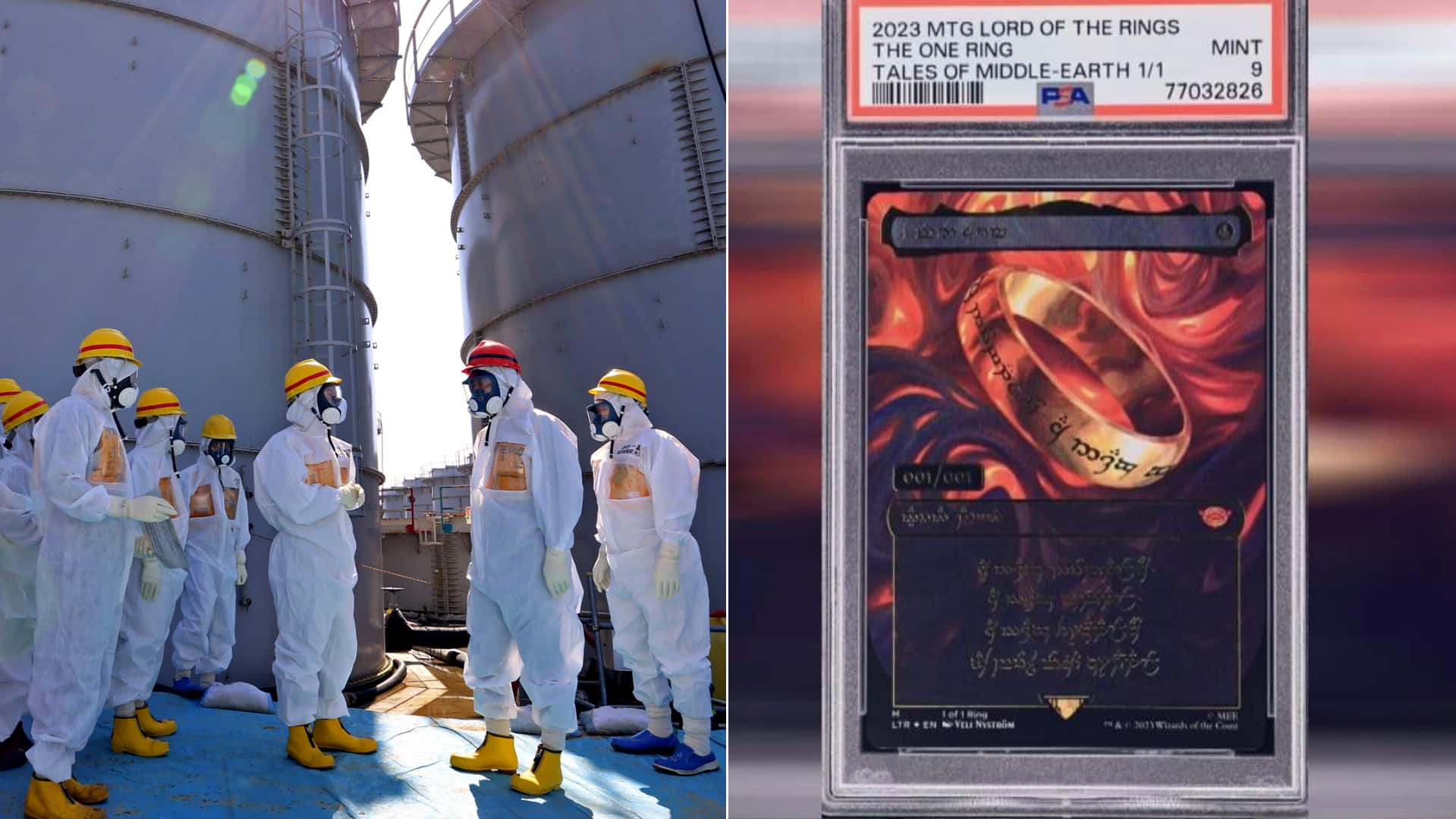
Hundreds of people marched in Seoul on Saturday to demand that Japan scrap plans to release treated wastewater from the damaged Fukushima nuclear power plant as the United Nations nuclear agency’s head met with senior officials to discuss food safety concerns.
The protests came a day after South Korea’s government formally endorsed the safety of Japan’s plans, saying the contamination levels of water pumped out from the disabled plant would be within acceptable standards and wouldn’t meaningfully affect South Korean seas as long as the plant’s treatment systems work as designed.
The announcement aligns with the views of the International Atomic Energy Agency (IAEA), which approved the Japanese discharge plans this week, saying the treated wastewater would meet international safety standards and pose negligible environmental and health impacts.
Braving blistering summer heat and closely watched by police, the protesters walked in long lines through a commercial district in downtown Seoul, holding signs reading,”We denounce the sea disposal of Fukushima’s nuclear wastewater!” and, “We oppose with our lives the sea discharge.”
The marches were peaceful, and there were no immediate reports of major clashes or injuries.
“Other than discharging the water into the sea, there is an option to store the water on their land and there are other options being suggested,” said Han Sang-jin, spokesperson for the Korean Confederation of Trade Unions, whose members accounted for many of the marchers.
He said allowing Japan to discharge the water “is like an international crime.”
July 5, 2023 | Japan plans to release radioactive wastewater from the damaged Fukushima nuclear plant. How will it work and is it safe? Then: why a trading card found in Whitby, Ont., could be worth millions of dollars.
Saturday’s protest provided a tense backdrop to a meeting between Rafael Mariano Grossi, the IAEA’s director general, and South Korean Foreign Affairs Minister Park Jin. They were expected to include discussions over fear about food contamination.
South Korea’s Foreign Affairs Ministry didn’t immediately release details of the talks.
IAEA director general faces angry protesters
Speaking to reporters in Tokyo on Friday before his flight to South Korea, Grossi said he was aware of the unease in the country and was willing to communicate more actively with critics, including South Korean opposition politicians, to reduce concerns.
Hours later, he was greeted by dozens of angry protesters at an airport near Seoul. They denounced the IAEA’s support of the discharge plans, holding signs reading, “Dismantle IAEA!” and “Fukushima wastewater will definitely lead all humanity to disaster!”

Grossi is expected to meet on Sunday with lawmakers from the opposition Democratic Party, which has harshly criticized the Japanese discharge plans and accused the conservative government of South Korean President Yoon Suk Yeol of putting the nation’s health at risk while desperately trying to improve relations with Tokyo.
In March 2011, a major earthquake and tsunami disabled the power supply and cooling of three Fukushima reactors, causing a nuclear accident and damaging all four reactors.
The safety of Fukushima’s wastewater has been a sensitive issue for years between U.S. allies South Korea and Japan, which have been working in recent months to repair relations long strained over wartime historical grievances to address shared concerns such as the North Korean nuclear threat and China’s assertive foreign policy.
South Korea’s assessment about the safety of the discharge plan was partially based on observations by a team of government scientists who were allowed to tour the Fukushima plant in May.
